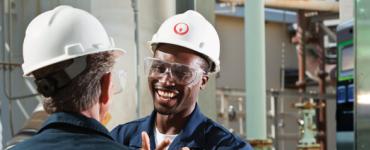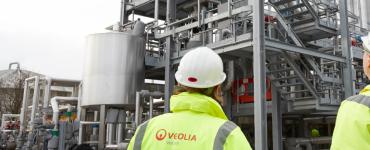- Home
- Case Studies
- De-oxygenation helps decommissioning at Wylfa, UK

De-oxygenation helps decommissioning at Wylfa, UK
Client Needs
Wylfa power station consists of two 490MW carbon dioxide gas cooled reactors, each driving two high pressure steam boiler and turbine generator sets. Each reactor has a 3,800 tonne graphite core containing over 49,000 natural uranium Magnox-clad fuel elements and 200 boron control rods to control the nuclear reaction. Reactor 1 is still operational, but defueling has been commenced on Reactor 2. During defueling, cooling water will be circulated around the reactor and boilers until the reactor has been completely emptied of irradiated fuel. Each boiler has a capacity of 160m3 of demineralised water and, to reduce the chance of water leaks, it is essential that corrosion is minimised
during this time. To this end, Magnox chemists wanted to reduce the dissolved oxygen concentration of the water to less than 100ppb. Together with Project Manager, Paul Dundee and System Engineer, Robert Bradley, they turned to Veolia Water Technologies for help.
Our Solution
Veolia Water Technologies’s solution was membrane deoxygenation. They designed and supplied a pilot plant for a two week trial on site in 2011, during which the dissolved oxygen concentration of the water was reduced from
>10,000ppb (full saturation) to <100 ppb. Following a design review, incorporating lessons learned during the trial, Veolia Water Technologies later modified the pilot plant and supplied three more membrane de-oxygenation skids, one for each boiler circuit, to provide continuous oxygen removal and particle filtration. Each skid includes process units to pre-treat and de-oxygenate the water together with monitoring equipment. The redesign includes full recirculation of the processed water, with a control panel providing all control and interlock functions
The Result
The three redesigned de-oxygenation skids were commissioned early in 2012 to ensure availability in April 2012. Dissolved oxygen is consistently less than the specified 100ppb. “For us, the pilot trials were crucial in ensuring that the membrane system would achieve the 100ppb.” says Paul Dundee. “Both of the Reactor 2 systems are currently operating 24 hours per day and will continue to do so for another five to seven years. Being largely inert, it takes very little to operate and maintain the skids. The de-ox solution should significantly reduce corrosion in the cooling system, and that means fewer leaks, better security and lower maintenance costs.” The final two skids have been delivered, and due to the site’s on-going Generation Maximisation projects, will be installed and commissioned in 2016 when Reactor 1 is finally shut down.













